Our Issues
Clean water is the lifeblood of the St. Johns River and its tributaries.
Our wetlands, forests, riparian zones adjacent to waterways, and aquatic plants filter and cleanse the water and provide the habitat and food sources that sustain healthy plant, fish, and wildlife populations. Unfortunately, the ecological health and integrity of the St. Johns River system is threatened due to inadequate protections and the cumulative impacts of a growing population.
St. Johns Riverkeeper is dedicated to the restoration of the St. Johns River by addressing and resolving the following issues that are impacting its health.
Nutrients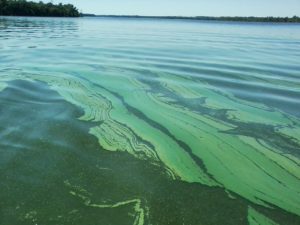
Nutrient overload, or eutrophication, is one of the most serious water quality problems facing the river and its tributaries. Nitrogen and phosphorus are necessary elements for all ecosystems. However, too much of these nutrients in natural systems can be harmful and toxic. Our river contains more nutrients than it can “dilute.” Excessive nutrients feed uncontrolled algae blooms that deplete oxygen in the water clog fish gills, and reduce light that is essential to submerged vegetation. Some species produce potent toxins can be harmful to humans and animals. Sources of these nutrients come from wastewater treatment plants, sewage sludge, industrial discharges, failing septic tanks, stormwater runoff, and fertilizers that regularly wash into the river.
Bacteria
Fecal coliform bacteria are microorganisms associated with the intestinal tract of warm-blooded animals that can contaminate our waterways and drinking water. The tributaries of the St. Johns River often contain dangerous levels of fecal coliform from failing septic tanks, poorly treated wastewater, broken sewer lines, and animal waste. In the Lower Basin (Welaka to Jacksonville), 75 streams are listed as “impaired” due to elevated levels of fecal coliform bacteria, with most of those located in Duval County.
Water Withdrawals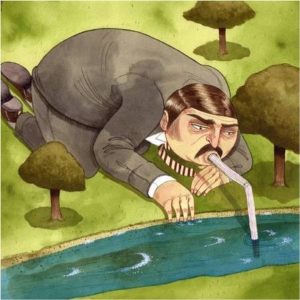
Central Florida is already reaching the sustainable limits of its predominant source of water, the Floridan Aquifer. As a result, the three water management districts in this five county area – the St. Johns River Water Management District (SJRWMD), South Florida Water Management District and Southwest Florida Water Management District – created the Central Florida Water Initiative (CFWI) to identify alternative sources of water to meet demand.
In 2015, the CFWI released water supply plans that include projects that could remove up to 160 mgd of surface water from the St. Johns River at a cost of up to $1.79 billion. Removing millions of gallons a day from the flow of the St. Johns will worsen existing pollution problems, increase salinity levels, and adversely impact the fisheries, wildlife, and submerged vegetation in and along the river. We are committed to preventing withdrawals and advocating for more sensible solutions, such as water conservation and the responsible use of reclaimed water.
Sedimentation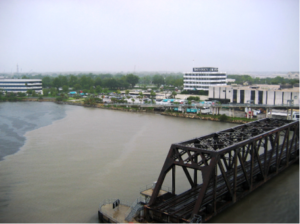
Sedimentation increases turbidity, or the measure of suspended particles in water, resulting in significant ecological harm to our waterways. Soil that runs off farms and construction sites buries aquatic life, disrupts the food chain, degrades water quality, and adversely impacts recreational opportunities. Other sources of sedimentation include dredging and boat or ship wakes that increase shoreline erosion. There are also financial costs associated with sediment runoff. Waterways clogged with sediment can reduce property values and property taxes by limiting access for boating. In addition, tributary restoration projects to fix sedimentation problems can cost millions of dollars to complete.
Habitat Loss and Degradation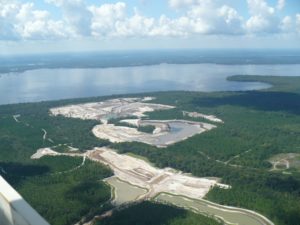
Pressures from growth and development result in significant degradation and loss of important aquatic and terrestrial habitat. According to 1000 Friends of Florida and the Florida 2070 Report, the state’s population is expected to increase from 21.3 M to over 33.7 M, or 58%, by 2070. Much of this growth is expected to occur in the St. Johns River watershed. St. Johns RIVERKEEPER advocates for sustainable building practices, smart growth patterns, and land conservation efforts can help to minimize the impact and protect the health of our river. We are currently engaged in legal action against the State of Florida for misappropriating funds that are required to be used for land purchases and restoration. In June 2018, the judge ruled in favor of the plaintiffs, but the State is appealing that decision. Read more…
Wetland Impacts
For decades, our wetlands were thought to be worthless swamps and wastelands that must be drained and reclaimed in the name of economic progress. In the early 1900s, a network of canals, ditches, and levees were built in an effort to drain the wetlands that formed the headwaters of the St. Johns River. More than 70 percent of the marsh was converted into agricultural lands and urban development. Since Florida’s inception as a state, we have drained and filled approximately half of our wetlands.
Nearly a century later, we now recognize the value and importance of wetlands to the environment and people. According to the U.S. Environmental Protection Agency, “wetlands are among the most productive ecosystems in the world, comparable to rain forests and coral reefs.” Wetlands provide fish and wildlife habitat, flood storage, water filtration, shoreline erosion and storm surge protection, and recreational opportunities, as well.
In 1988, President George H. W. Bush announced a pledge of “no net loss of wetlands”, and President Bill Clinton and President George W. Bush followed suit and echoed these same words. Unfortunately, we are still allowing our wetlands to be decimated at an alarming rate.
Pollutants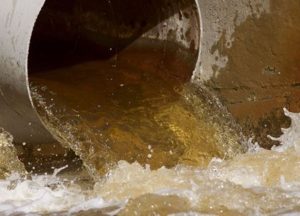
Pollutants that are deteriorating the water quality and the health of humans and aquatic wildlife include heavy metals, such as mercury, and organic compounds, such as PCBs and dioxin. These pollutants enter our waterways from many sources, including industrial wastewater discharges and air pollution. Pollutants can be found in the sediments at the bottom of the river and often make their way into the food chain. Many fish species are unsafe for consumption because of the high level of pollutants in their tissues. Other pollutants affecting the river include pesticides, herbicides, and Contaminants of Emerging Concern (CECs). CECs are chemicals, such as pharmaceuticals, personal care products, and household cleaning products, that are increasingly being detected at low levels in ground and surface water and may be harmful to the health of our river.
Dredging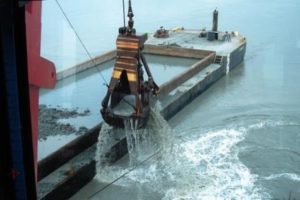
JAXPORT recently dredged 11 miles of the St. Johns River from the mouth at the Atlantic Ocean to Blount Island to accommodate larger post-Panamax ships. By removing 18 million cubic yards of rock and sediment to deepen the river from 40 to 47 feet, we know salt water will move farther upstream based on the results of previous dredging projects and projections by the U.S. Army Corps of Engineers. This increase in salinity will likely damage or destroy hundreds of acres of wetlands, submerged grasses, and trees in parts of the river and its tributaries, such as Julington Creek and Ortega River. Critical habitat for fisheries and pollution filters for our river will be lost in the process.
In addition, decades of dredging has resulted in higher water levels in our river and greater risk from flooding. The current dredging plan will further increase water levels and storm surge, making us even more vulnerable. The Army Corps projects water levels in the river could increase by up to 12% during smaller, “high frequency” storms. Yet, the agency refutes the need for a flood analysis.
Unfortunately, the Army Corps of Engineers has consistently failed to provide a thorough analysis, accurately assess these environmental impacts, or require adequate mitigation to offset damage from the dredging project. As a result, St. Johns RIVERKEEPER filed a lawsuit and continues to advocate for more mitigation to protect and fortify the St. Johns River.